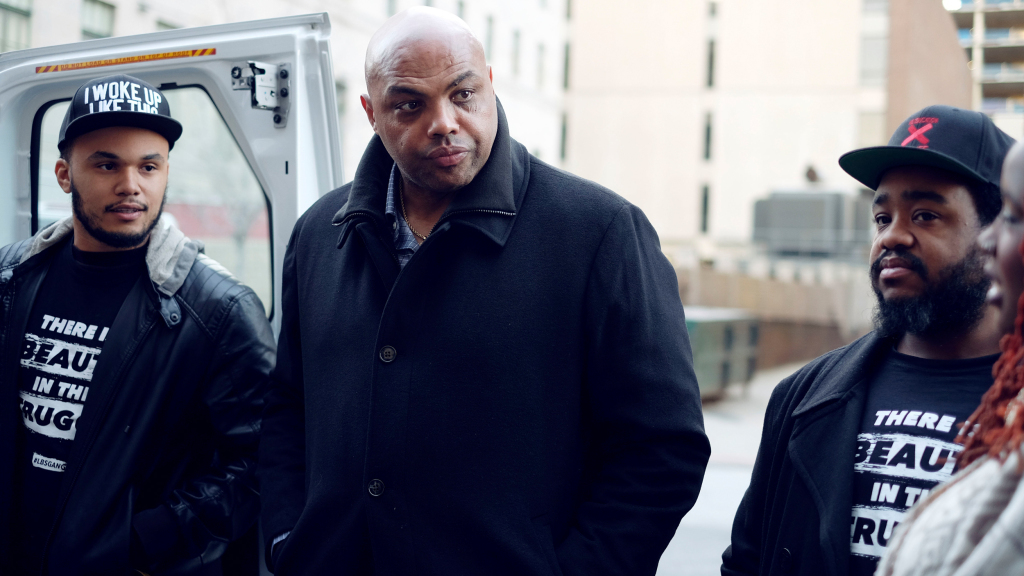
Last night TNT aired the Baltimore-themed episode of Charles Barkley’s four-part series, American Race (formerly The Race Card). The episode drew some headlines and controversy before it aired after Barkley’s town hall on the relationship between cops and citizens dissolved into something of a shouting match. To Barkley’s credit, he stayed and listened, even when one Baltimore resident accused Barkley of “hiding behind a wall” and being “sick.” Barkley’s intentions may be good, but his approach to race relations is naïve and not nuanced—it basically boils down to, “Why can’t we all just get along?”
As for his views on Baltimore, let’s just say that some of his insights—that Baltimore is a “very divided city” or that our inner cities are lined with boarded up or unlivable rowhomes—aren’t exactly revelatory to those of us who live here.
At least Barkley had the good sense to use Devin Allen, the local photographer whose image of a black man retreating from a line of heavily armed cops made the cover of Time magazine, as his guide.
Allen takes Barkley to his house, where his mom makes her famous crab dip (Barkley approves) and Barkley and Allen’s family discuss whether the events in the wake of Freddie Gray’s death at the hands of the police was an “uprising” or a “riot.”
Allen feels strongly that it was an uprising—an expression of righteous rage and an attempt to finally be seen and heard; Barkley, who famously called the Ferguson protesters “scumbags,” thinks it’s dumb for people to destroy their own property. Later it’s Allen who is able to calm inflamed tempers at the town hall, essentially vouching for Barkley as someone who is on their side, or at least trying to be.
Many deemed the chaos left in the wake of Freddie Gray’s death a riot, @byDVNLLN considered it a necessary uprising. #AmericanRaceTNT pic.twitter.com/mWG0LiK6QU — American Race (@AmericanRaceTNT) May 9, 2017
Barkley also tours the Sandtown neighborhood where Freddie Gray lived. In a humorous moment, Gray’s lawyer, Billy Murphy, accuses Barkley of voting for Donald Trump. Barkley shakes his head but doesn’t quite deny it, either.
At one point, Barkley goes to the Baltimore Police Station and talks to some cops who seem genuinely distressed over the unrest and Baltimore’s deeply entrenched problems. This is good. Less good is a scene where Barkley partakes in a simulated police training exercise. With his “gun” at the ready, Barkley is instructed to figure out whether or not deadly force is required. In each scenario—or at least the ones TNT chose to air—it was kill or be killed for the cop. In one scenario, a man with a knife approaches Barkley in a stairwell. Barkley doesn’t shoot. The screen goes blank.
“You’re dead,” the cop supervising the exercise tells him.
Barkley’s heart is definitely in the right place and this country does need to have a more open dialogue about race. (Subsequent episodes look at Muslim Americans, immigration, and Hollywood stereotyping.) Still, for a more thoughtful reflection on race, I’d recommend Ava DuVernay’s 13th, Theo Anthony’s Rat Film (which just played at the Maryland Film Festival), or—if I might be so bold—two of our feature stories: A Tale of Two Cities (on Freddie Gray’s Baltimore) and Who Wants To Be a Cop Now?
